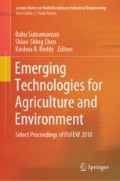Abstract
Dholavira was a part of the Indus Valley Civilisation known for its efficient town planning and water conservation. Dating back to 2600 BC, when cast iron and steel pipes were sporadic and rather scarce, unskilled builders within the city cut trapezoidal channels for water to flow into the city. These channels were excavated from natural earth with low Hazen–Williams constant (0.01) avoiding major and minor losses. Modern materials like cast iron when used cause excessive frictional losses inside the pipes, resulting into loss of hydraulic gradient. The most crucial fact that this paper establishes is a new calculation of the city’s natural hydraulic gradient which is estimated to be about 12–20 m. This is sufficient for an efficient distribution of water from reservoirs to the inner dwellings of the city. The reservoirs with a height of 22–24 m could supply a unit demand of 11–16 MLD and store 2–3 MLD. The hydraulic gradient obtained from a Bentley WaterGEMS simulation was around 24 m which was close to the natural hydraulic gradient. The Scenario energy cost for Dholavira was also calculated using an energy pricing model which was then compared to modern-day water management systems. When superimposed on the 2600-BC-old distribution channel, it gave a savings of about 7.02 million USD annually in terms of energy efficiency.
Access this chapter
Tax calculation will be finalised at checkout
Purchases are for personal use only
References
Ghosh, S., Goenka, A., Deo, M., Mandal, D.: Vernacular architecture as an idiom for promoting cultural continuity in South Asia with a special reference to Buddhist monasteries. AI & Soc., 1–16 (2017)
Subramanian, T.: The rise and fall of a Harappan city. Frontline 27, 12 (2010)
Joshi, J.P.: Harappan architecture and civil engineering. Rupa Publications (2008)
Bisht, R.S.: A new model of the Harappan town planning as revealed at Dholavira in Kutch: a surface study of its plan and architecture. Hist. Archaeol., 397–408 (1989)
Kenoyer, J.M., Heuston, K.B.: The ancient South Asian world. Oxford University Press, USA (2005)
Hlavinek, P.: New/old ways for storm water: learning from the history. In: IWHA 2007 Conference CD (2007)
IGNOU.: Interpretation and explanation of archaeological record. MAN-002 Archaeological Anthropology (2011)
Lahiri, N.: South Asian demographic archaeology and Harappan population estimates: a brief reassessment. The Indian Economic & Social History Review 35(1), 1–22 (1998)
Mays, L.W.: Water resources engineering. Wiley (2010)
Tavani, S., Granado, P., Corradetti, A., Girundo, M., Iannace, A., Arbués, P., et al.: Building a virtual outcrop, extracting geological information from it, and sharing the results in Google Earth via OpenPlot and Photoscan: an example from the Khaviz Anticline (Iran). Comput. Geosci. 63, 44–53 (2014)
Bisht, R.: Dholavira excavations: 1990–94. Facets of Indian civilization: recent perspectives essays in honour of Prof. BB Lal Aryan Books International, New Delhi, pp. 107–120 (1997)
Brater, E.F., King, H.W., Lindell, J.E., Wei, C.: Handbook of hydraulics for the solution of hydraulic engineering problems, vol. 7. McGraw-Hill, New York (1976)
Christensen, B.A.: Discussion of “flow velocities in pipelines” by Richard D. Pomeroy (August, 1983). J. Hydraul. Eng. 110(10), 1510–1512 (1984)
Chanson, H.: Hydraulics of open channel flow. Elsevier (2004)
Nikuradse, J.: Laws of flow in rough pipes. National Advisory Committee for Aeronautics Washington (1950)
Dini, M., Tabesh, M.: A new method for simultaneous calibration of demand pattern and Hazen-Williams coefficients in water distribution systems. Water Resour. Manage. 28(7), 2021–2034 (2014)
Brion, L.M., Mays, L.W.: Methodology for optimal operation of pumping stations in water distribution systems. J. Hydraul. Eng. 117(11), 1551–1569 (1991)
Shamir, U.Y., Howard, C.D.: Water distribution systems analysis. J. Hydraulics Div. 94(1), 219–234 (1968)
Wu, Z.Y., Arniella, E.F., Gianella, E.: Darwin calibrator—improving project productivity and model quality for large water systems. J. Am. Water Works Assoc. 96(10), 27–34 (2004)
Ramos, H.M., Vieira, F., Covas, D.I.: Energy efficiency in a water supply system: energy consumption and CO2 emission. Water Sci. Eng. 3(3), 331–340 (2010)
Kumar, M.D., Singh, O.: Market instruments for demand management in the face of scarcity and overuse of water in Gujarat, Western India. Water Policy 3(5), 387–403 (2001)
Author information
Authors and Affiliations
Corresponding author
Editor information
Editors and Affiliations
Rights and permissions
Copyright information
© 2020 Springer Nature Singapore Pte Ltd.
About this paper
Cite this paper
Ghosh, S., Umashankar, M., Chowdhury, S. (2020). Modelling Water Resources in the Ancient Indus Valley City of Dholavira and Lessons Learnt. In: Subramanian, B., Chen, SS., Reddy, K. (eds) Emerging Technologies for Agriculture and Environment. Lecture Notes on Multidisciplinary Industrial Engineering. Springer, Singapore. https://doi.org/10.1007/978-981-13-7968-0_17
Download citation
DOI: https://doi.org/10.1007/978-981-13-7968-0_17
Published:
Publisher Name: Springer, Singapore
Print ISBN: 978-981-13-7967-3
Online ISBN: 978-981-13-7968-0
eBook Packages: EngineeringEngineering (R0)

